The AIA National Convention in San Francisco took place last week, and Architosh made its rounds with a multitude of technology exhibitors (all software) inside and outside the official Technology Pavilion.
Two important themes loomed large at the show this year. The first and biggest was the prospect of AI (artificial intelligence) entering the industry’s leading software tools. The second minor theme was Apple’s recently announced Vision Pro mixed-reality headset.
Apple There But Not There
When discussing other software solutions, at moments, our conversation verged into the direction of the Apple Vision Pro. Sometimes it was about gauging my feelings about the new Apple headset. At other times about their enthusiasm for the new device. However, unlike AIA conferences four or five years ago, there was a significant decline in technology pavilion vendors showcasing VR/AR/MR headsets in action on the show floor. There were some Magic Leap devices, but not the company in the exhibit.
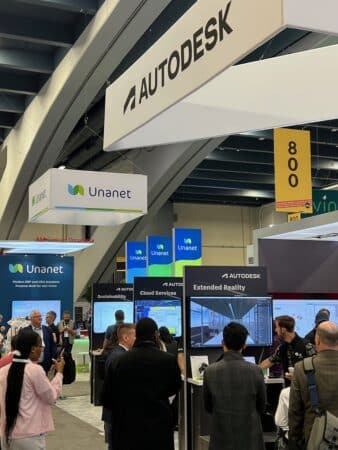
A photo from the show floor where dozens of digital technology companies exhibited at AIA23 (AIA National Convention San Francisco).
Is VR dead in architecture?
Immersive technology in architecture (or AEC) is not dead by any means, but the emerging technology (emTech) of virtual reality, augmented reality, and mixed reality (VR/AR/MR) has moved beyond the Peak of Inflated Expectations (based on the famous Gartner Hype Cycle – see below). (for focused content solely on emTech in AEC, subscribe to our newsletter, Xpresso)
VR/AR/MR in architecture firms reportedly has single-digit percentage use in daily active projects and is likely on the low side. On top of that, there has been major supplier consolidation and failures on the software side serving the AEC industry. The biggest consolidation has been The Wild acquiring irisVR (a leader and past AIA BEST of SHOW winner) and then Autodesk acquiring them in 2022.
Based on the Gartner Hype Cycle and its five phases (see image above), immersive headset technologies are entering the fourth phase (Slope of Enlightenment) with second-generation products and services emerging.
All headsets until Apple’s Vision Pro should be considered first-generation devices, regardless of iterative improvements and product upgrades. These first-generation systems were adjunct to both desktop and mobile computing systems and often relied on them. Apple’s Vision Pro is a new general computing paradigm and entirely independent of both desktop and mobile computing.

Apple Vision Pro is a next-generation immersive computing device and a paradigm shift in user experience (UX) in computing. The device has excited developers we spoke to exhibiting at AIA San Francisco (AIA23).
Regarding some feedback we heard, what is exciting to software makers in AEC about Apple’s Vision Pro is how high the company has raised the bar. This will chase up the immersive industry, and things will only improve for everyone. The specifics of Vision Pro’s immersive graphics (display technology) are highly exciting. The sheer visual quality is transformative.
Yet, developers we spoke to about the Vision Pro only say that they look forward to its impact and what that device may mean for their solutions.
AI in Architecture
At AIA23 this year, some fabulous new AI technology emerged that will be transformative to the industry. Some items were only being shown to the press.
The emergence of ChatGPT in the past year has left an indelible mark on the industry. And by the end of this year, architects will see several new AI-based, text-prompt-based technologies that will add key value to workflows.
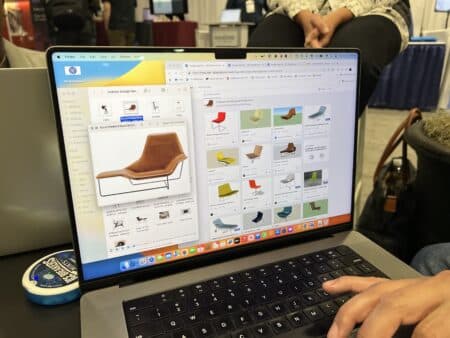
SketchUp’s 3DWarehouse has new AI-powered features coming to help users find the models they are looking for far faster than normal search.
One surprising place this kind of technology will impact users soon is Trimble’s SketchUp. The world’s most popular 3D modeling software will quickly unveil more than one critically applied use of AI.
AI technologies are also behind Autodesk’s new Forma—a cloud platform for the AEC industry—where the company is highly focused on the value of data and says the security and privacy of data reign supreme for Autodesk.
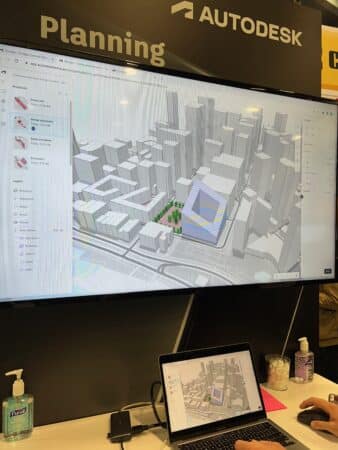
An iPhone snap of Autodesk Forma in action from our discussion with the company about its latest features. Forma has been infused with machine learning (AI) features, and the company is highly focused on AI in general and the security of AI as this technology moves forward in the industry.
Another surprising place AI will soon be used is inside the AIA’s software for the US market. The AIA’s Documents software for AIA contracts and forms will quickly be liberated entirely from the need for desktop-era applications like Microsoft Word. The AIA showcased its new fully cloud-based contracts, forms, and data analytics software solution.
Other Trends
Going into AIA23, there has been much thought about several new BIM (Building Information Modeling) tools Architosh has written about, primarily in our Xpresso newsletter, which focuses exclusively on emerging technologies (emTech). These new BIM tools have been associated with the notion of BIM 2.0. (see: AEC Magazine, “Defining BIM 2.0,” 2 June 23)
BIM 2.0 tools address shortcomings in legacy BIM 1.0 tools. However, some of these new tools are so new they are still in beta. And some BIM 2.0 tools are simply trying to address BIM 1.0 era pain points. An example would be Qonic, which is “upscaling BIM data in both geometry and data” and aims to work with established BIM leaders like Revit.
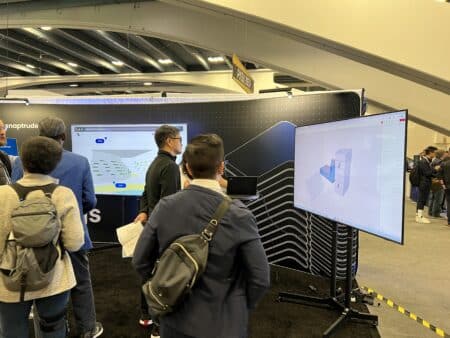
Newcomer Snaptrude is a BIM 2.0-era tool that captured a lot of attention at AIA23. The company has its software being tested out by dozens of big tech-forward firms and has a developing partnership with Germany’s Graebert around its ARES DWG drawings technology.
Qonic wasn’t at AIA23, but the New York-based Snaptrude (with development offices in India) was at AIA23 and had something to say about front-end design phase challenges and BIM (more on this later). We also got some sneak peeks at upcoming Snaptrude features and technology. Interestingly, Snaptrude—fully cloud-based like Autodesk Forma—has its own geometry kernel. At one time, it was very interested in using Parasolid as its geometry kernel but chose not to.
Another BIM 2.0 era offering is Skema, which is Boston and London based and offers architects generative engine technology in the cloud that can output BIM LOD350 models that you can take into Revit. Skema is co-founded by Martin (Marty) Rozmanith, an instrumental early Revit (pre-Autodesk) development team member.
To learn more, visit our AIA23 Day 1 Report.
Also, read our AIA23 Architosh 9th BEST of SHOW report here.

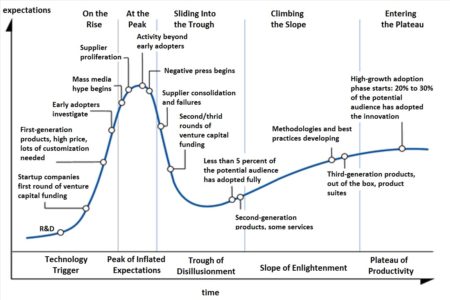


Reader Comments
Comments for this story are closed